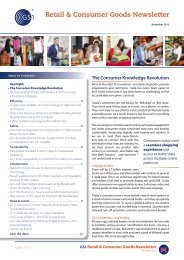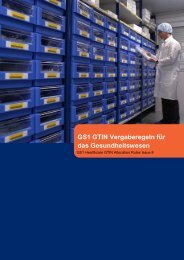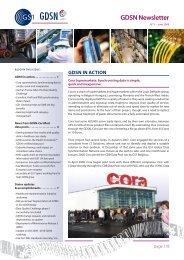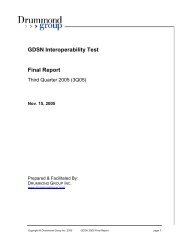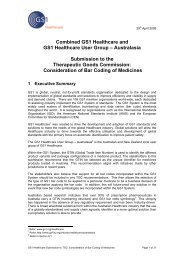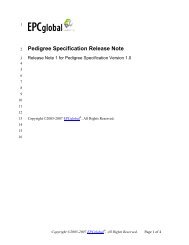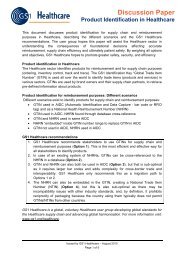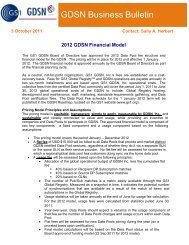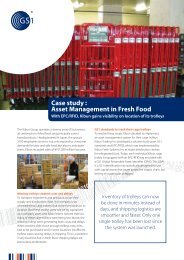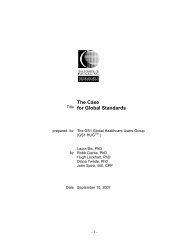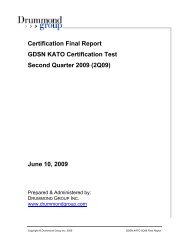Standard International Logistic Label - STILL - GS1
Standard International Logistic Label - STILL - GS1
Standard International Logistic Label - STILL - GS1
You also want an ePaper? Increase the reach of your titles
YUMPU automatically turns print PDFs into web optimized ePapers that Google loves.
<strong>GS1</strong> <strong>Logistic</strong> <strong>Label</strong><br />
7 Business practices<br />
7.1 <strong>Label</strong>ling and relabelling<br />
The SSCC is the key to logistical traceability. <strong>Logistic</strong> units have to be identified in a<br />
standardised way using a SSCC. If logistic unit is not broken or merged, it is recommended<br />
to maintain the initial SSCC throughout the supply chain.<br />
If logistic unit is broken and then reconstituted or merged, it is a new logistic unit. In that<br />
case, the party who create the new logistic unit has to create a new SSCC and has to record<br />
and manage link between the initial SSCCs and the new one(s).<br />
32<br />
7.1.1 Business Case<br />
Referring to Chapter 6 the normal procedures for labelling logistic units are the following:<br />
1. The manufacturer applies a label containing supplier information like SSCC, product<br />
description, GTIN, best-before-date, batch/lot etc.<br />
2.<br />
When the buyer is known, customer information like Buyers Purchase Order number is<br />
put on an additional label on the logistic unit.<br />
3. At last when the logistic unit is ready for shipment, carrier information like despatch<br />
address and delivery address is put on an additional label on the logistic unit.<br />
Of course, if all information is known when the initial label is applied, all information may<br />
be labelled in one operation and in one label.<br />
In real life, logistic units after reaching the destination may be forwarded to a new location<br />
after a short or longer period of storage. This is most likely to be the case if the destination<br />
point is a third party logistic provider, importer or a wholesaler. In such situations the<br />
shipping and delivery addresses on the logistic unit are changed but the original supplier<br />
information like SSCC, product description GTIN, etc. is still valid and should be kept on<br />
the logistic unit. This means that for subsequent transports some information on the<br />
label should be kept, and some information (like shipping and delivery address) has to be<br />
replaced.<br />
© <strong>GS1</strong> 2008



